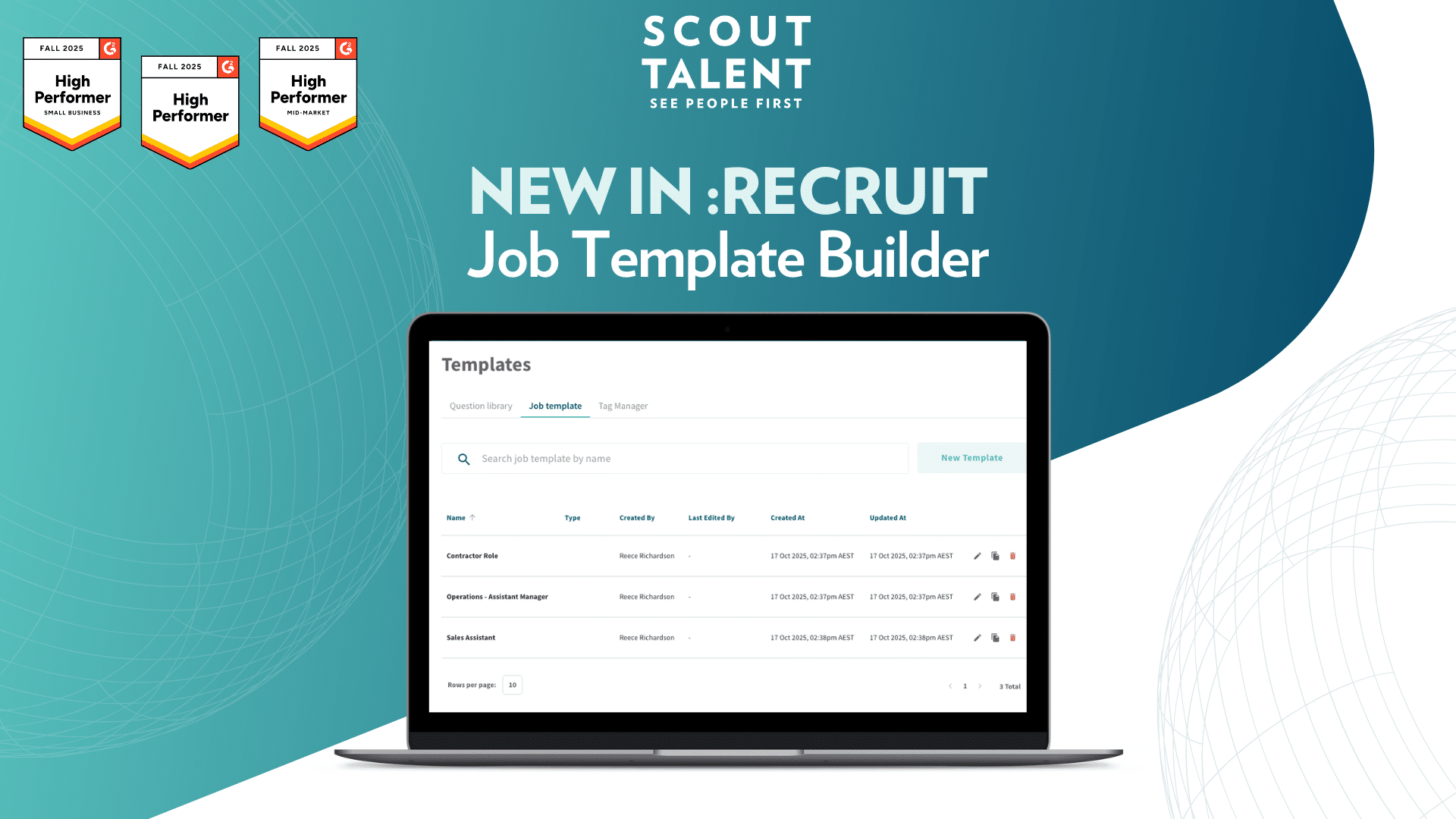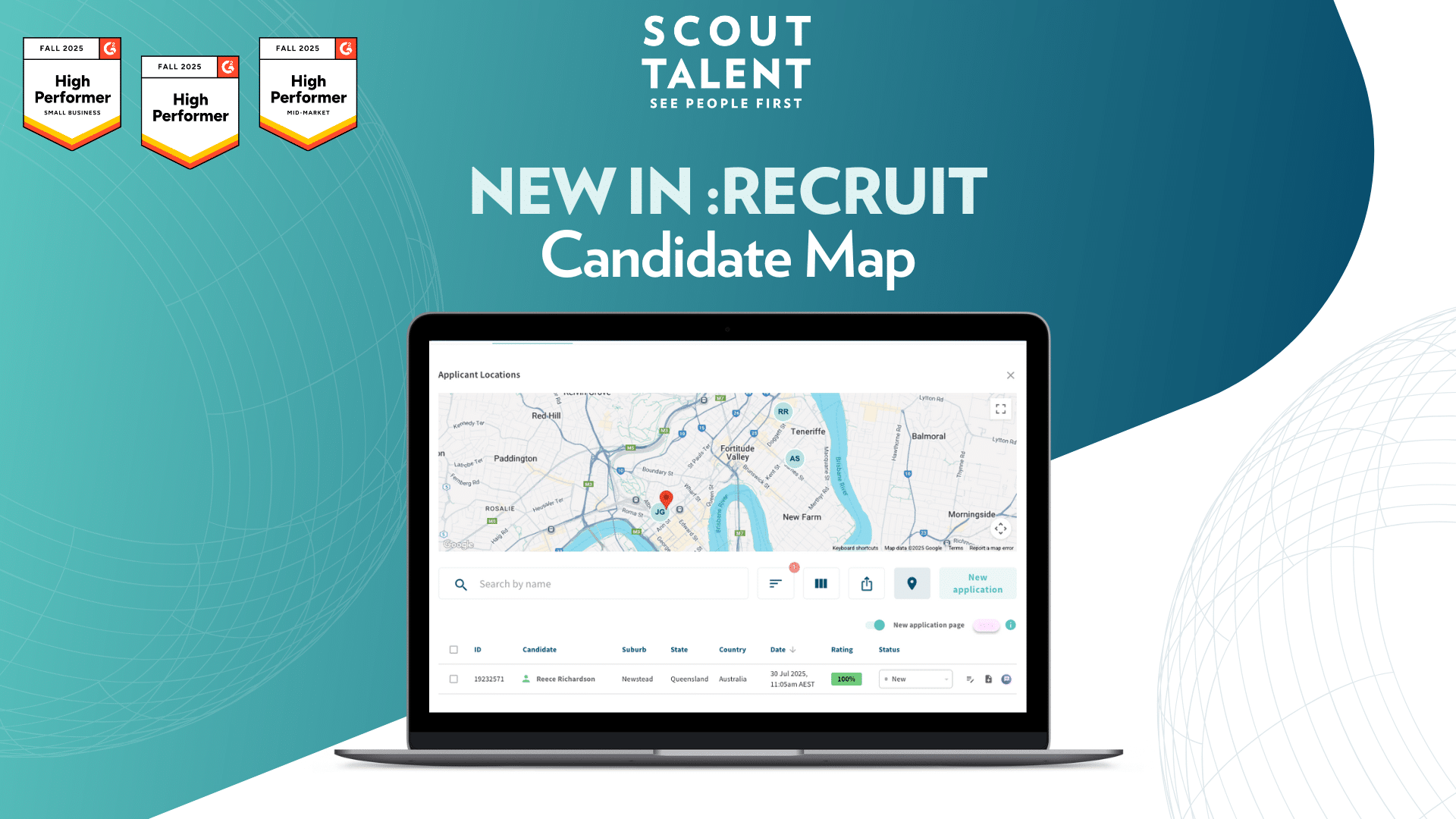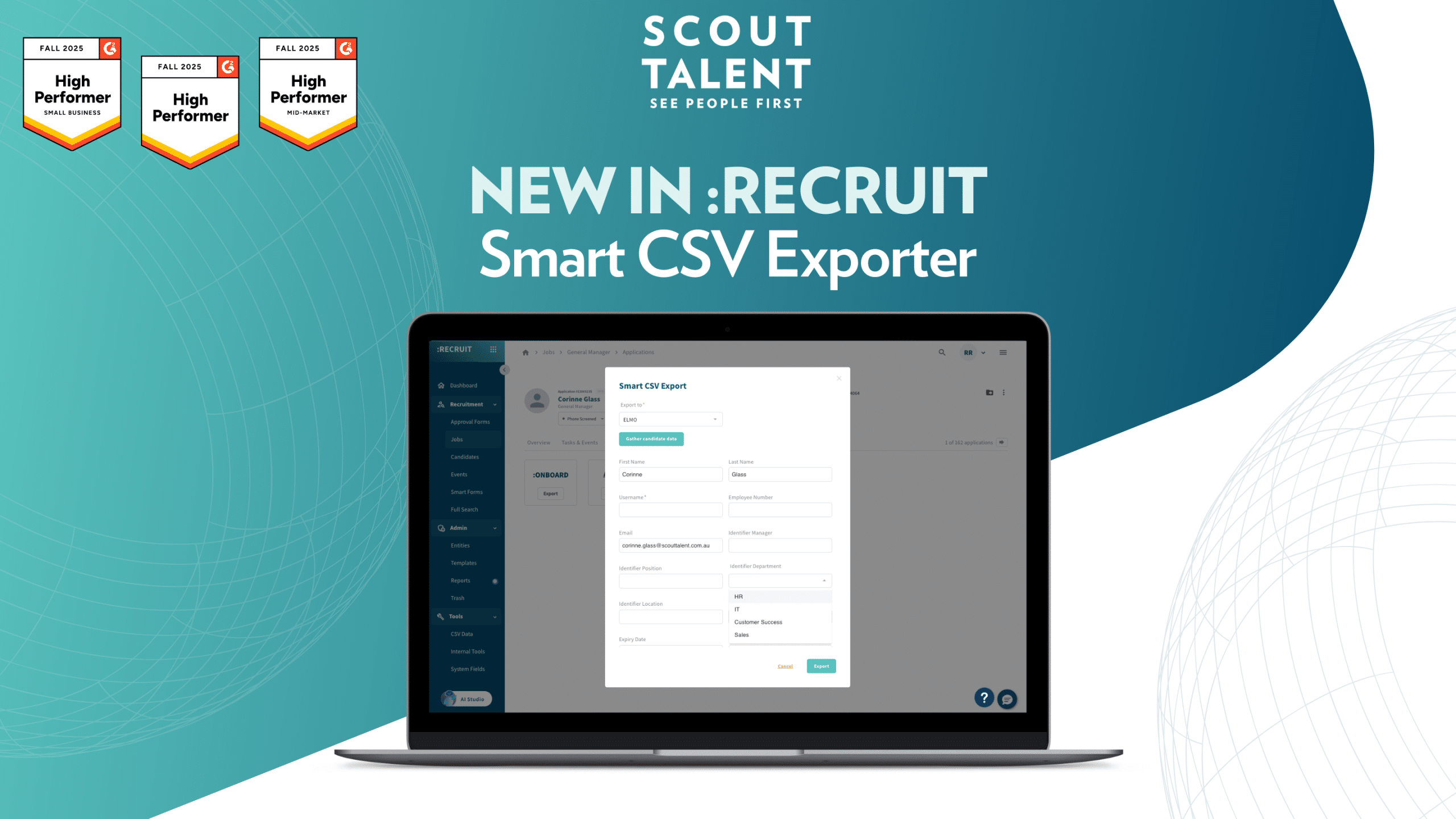With so many disruptions in 2020, organizations have been forced to switch to digital processes (including recruitment!). But is this a chore, or an opportunity? With physical distancing regulations still in place and many team members still working from home, remote hiring is a great opportunity to increase your organization’s agility and find great candidates… without face-to-face interviews.
The most robust recruitment processes are highly digital, allowing organizations to be more agile. Many remote hiring processes use best practices, with customized automation and procedures that are more convenient for recruiters, hiring managers and candidates.
But there’s no one-size-fits-all approach.
Organizations have different structures, locations and existing processes. However, you can map out a remote hiring process to find the best candidates without face-to-face interviews, while still considering candidate expectations at every stage.
Here are our best tips for remote hiring and finding great talent without needing face-to-face interviews.
1. Online recruitment advertising & screening
Many organizations already advertise and screen candidates digitally, so simply follow best practices to manage and screen applications. Use an Applicant Tracking System, make use of auto-statuses to filter unsuitable applicants, use screening questions to quickly assess your top candidates, and communicate with candidates throughout the process with branded templates so they all have a positive experience with your organization.
If you use an Applicant Tracking System, start screening as soon as possible so all candidates receive timely communication. If you use candidate statuses, assign appropriate filters to indicate any action you’ve taken (for example, “contacted”, “interview booked”, etc.) Sort candidates by their overall rating to determine your frontrunners for interviews.
2. Schedule interviews online
Today’s candidates are tech-savvy and value convenience, so being able to schedule your interviews digitally makes you instantly more desirable as an employer. The majority of millennials hate phone calls! So if this demographic forms the bulk of your applicant pool, scheduling interviews digitally instead of over the phone will improve your overall candidate and help you secure those in-demand candidates in a timely manner. Not to mention, it’s far more convenient for you and your hiring managers.
After you’ve determined your top candidates’ from their applications, schedule interviews as soon as possible. (Some candidates are in high demand and may be interviewing with multiple organizations.)
Choose the right tools to send invitations and schedule interviews, preferably giving candidates some options to choose from. Here are some ideas for digital scheduling tools you can use:
- Recruitment software/Applicant Tracking System (ATS) – Your recruitment software should have the functionality to schedule interviews online and give candidates a few times to choose from.
- Calendly – Alternatively, if you don’t have an ATS, this low-cost scheduling tool is used by salespeople, marketers and recruiters alike. It provides a portal to manage all your interviews and calls and allows candidates to choose times that suit them.
- MixMax – This tool is another low-cost tool that offers candidates to view your email and choose times that work with them.
- Google Calendar – One of the simplest options for creating calendar invitations, Google Calendar allows you to create and share interview times with candidates; however, it can be more limited than the above options.
Many candidates can get lost due to scheduling gaps and miscommunications. Having a smooth interview process gives candidates a positive first impression of your organization and allows you to set and manage their expectations.
3. Conduct initial interviews remotely
The faster and more structured your interview process, the better your odds of landing your ideal new hire. In creating an efficient online recruitment process, you may opt to use digital initial interviews for your first round of screening, instead of immediately jumping to face-to-face interviews. (That’s not to say face-to-face interviews aren’t still an important part of the process, but you can still create a great online recruitment process without face-to-face meetings in the preliminary stages.)
Phone interviews can be an effective form of preliminary screening, particularly if you’ve received a large number of applications. However, unlike face-to-face or video interviews, they have their limitations, as they can feel a little impersonal and you can’t make eye contact and observe your candidates’ body language or demeanour.
More and more organizations are conducting video interviews during their initial stages of screening, as they are an easy way to save valuable time and resources. Choose the platform you’d like to host your interviews on, such as Skype, Facetime or Zoom.
4. Remember to use good communication
While you might easily integrate digital screening into your recruitment process, it can still be new and unfamiliar to some candidates. Be sure to give your candidates all the information they need to be prepared for a virtual interview (including usernames, meeting invitations) and be prepared to get in touch with them to ensure they feel comfortable about the process. Interviews are already stressful experiences, so you don’t want your candidates to feel stressed if they haven’t used the platform before. Include clear instructions in your invitation email to give them the opportunity to represent themselves in the best possible light.
Create an interview guide for you or your hiring manager. Use standardized behavioural-based interview questions tailored to the position you’re hiring for.
Tip: Immediately schedule follow up interviews with the strongest applicants, when appropriate.
5. Conduct online behavioural assessments
Hiring candidates without face-to-face interviews can be challenging, so behavioural assessments add an extra layer of data to your decision-making process. Behavioural assessments can form a valuable part of remote hiring. If you conduct these assessments prior to your interviews, the additional level of information can allow you to ask candidates better questions and have better conversations.
You may already use your own online behavioural assessments. (At Scout Talent, our Shortlisting & Selection Specialists use McQuaig behavioural assessments to assess candidates’ job and cultural fit.)
This can provide you with deeper insights and a greater understanding of candidates without having met them in person.
6. Conduct second-stage interviews
With physical distancing regulations starting to ease, your organization may decide to proceed to face-to-face interviews or opt for online second-stage interviews. Follow best practices for your second-stage interviews, including using your online scheduling tool to book interviews and using insights from your initial screening (i.e. don’t ask candidates the same questions they have already answered in their application or initial interview!).
7. Complete reference checks
Many organizations ask us if reference checks are still worthwhile. The answer? Yes!
11% of job applicants misrepresented why they left a previous employer (Hubspot).
Nearly one-third of job applications list dates of employment that are inaccurate by more than three months (Background Profiles).
Reference checks help you uncover these inconsistencies. Request contact details for your top candidates’ professional references, seek the most recent and relevant references (in terms of industry and position) and prepare your questions before you reach out to them to add more perspective and assess consistency.
8. Send your offers digitally
So, you’ve found a great candidate and want to extend an offer. Congratulations! It’s an exciting time, but don’t let candidate experience fall by the wayside. If you want to get your candidate excited about your organization and opportunity, keep in mind that printing and signing documents isn’t very fun!
Onboarding software is a great finishing touch to your online recruitment process, reducing administration pressures and increasing offer acceptance rates. Electronic signatures remove the barriers to acceptance, so candidates can sign anywhere, any time. You can also create simple contract approval workflows to ensure appropriate stakeholders and procedures aren’t missed. You can also use branded templates for your digital offers and other onboarding documentation to continue to build your employer brand.
9. Send candidate feedback
Even after you’ve made an exciting new hire, the rest of your applicant pool still needs care too. It’s time to notify all candidates about the outcome and thank them for taking the time to apply. If you have an Applicant Tracking System, you should be able to create a professional branded template with personalized tags to send this final feedback. For candidates who have taken the time to complete an interview, a personal phone call or voicemail message is ideal.
10. Talent pooling
Finally, we would be remiss to talk about online recruitment and not talk about talent pooling. Talent pooling is a beneficial, proactive approach to talent acquisition allowing you to prepare for future challenges and reduce your overall recruitment spend. With many candidates in the market, now is a great time to ask people to submit an expression of interest form and create pools based on roles you’ve previously advertised, even if you’re not able to hire them immediately. You can reach out to them with honest, authentic messaging to nurture them and keep them engaged with your employer brand. Then, when you’re hiring again, you can notify them of your new opportunities.
Once you’ve established a remote hiring process, it will become second nature for you and your team! But remember that for candidates, certain aspects will still be brand new. They may have questions, so be open with your communication, map out the process and ensure you’re delivering a great candidate experience.
Applicant Tracking Systems are a cornerstone of effective online recruitment. Scout Talent’s recruitment software is built by recruiters for recruiters and covers your end-to-end recruitment process.
Talk to us today about an ATS that can help you to create job descriptions, establish an effective screening process and create a great candidate experience on 1 866 474 3140 or at hello@scouttalent.ca
If you enjoyed this content and would like to receive our monthly recruitment update emails, simply fill out the form below.




